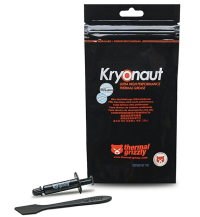Solid first post. Well researched and informed. Well worth the read if anyone skimmed over itHi all, just got account approved and want to share some more information after dig into the shared video.
On the reply section of the shared video's original site, there's a link posted by the uploader which links to their taobao site (very large chinese site for e-shops, similar to alibaba but more reliable and focus more on individual needs). The link, are offering hardware upgrading service for r5's cooling ability for 500CNY, and the service will begin in mid August.
I not promoting their business, but this got my attention and found more information about this guy and what are they saying on chinese geeks site.
Again, I don't recommend doing the same thing, which might break your warranty, but you might find it interesting:
I found their discussion on this site: https://forum.xitek.com/thread-1894934-1-1-1.html about R5's hardware with overheating issue. The poster ( not the shared video uploader) saying that" it looks like a PCB is covering the CPU which does not help with heat rejection. The metal plate for heat rejection is designed between the mother board and CMOS. Only a small pice of paste is used between CPU and the metal plate which doesn't help that much." ALSO, " the guy (video's uploader) added a grease pad between the plate and CPU, made it absorbing the heat more evenly and helped a lot. Just by doing that, (In a different video) the R5 was able to record 8K for 15 minutes(without overheating sign), turned off, and let the camera to take a 10 minutes break. Then was able to record 8K, until the card is filled (512GB, 27minutes of recording --- found it on the post below)." Here's the uploader's original post btw: https://tieba.baidu.com/p/6848700307?pn=1
their conclusion: " - just simply adding the grease pad does help a lot.
-Might be better by using bronze plate instead of aluminum for where the CPU is covering.
- CPU was around 40 ℃, which creates more heat than CF express card.
- the firmware is limiting the device. (since, after he added that pad. He was able to record longer 8K footage, but still overheat eventually. But after overheating, he left R5 under AC that R5's body is REALLY REALLY cold and still, he could only got 5 minutes of 8K or 10 minutes of 4K. "
that's pretty much what I got from the uploader's posts. Hope it could help or just ....entertain you a bit?
Oh, btw, they also found one cooling module originally designed for smartphone works very well on R5's back. One got an hour of 4K60 without overheating sign, and the body was still touch cold. Remember that fan module on the form a few days ago? That helps.
Upvote
0

